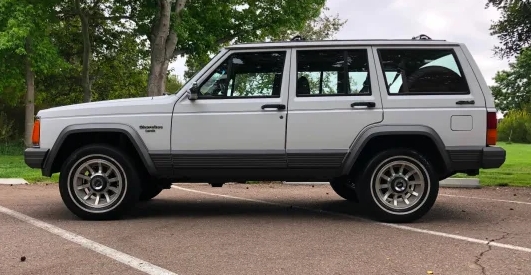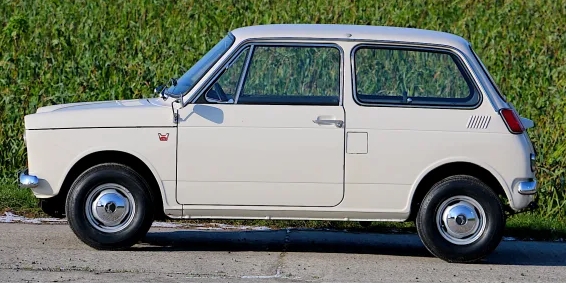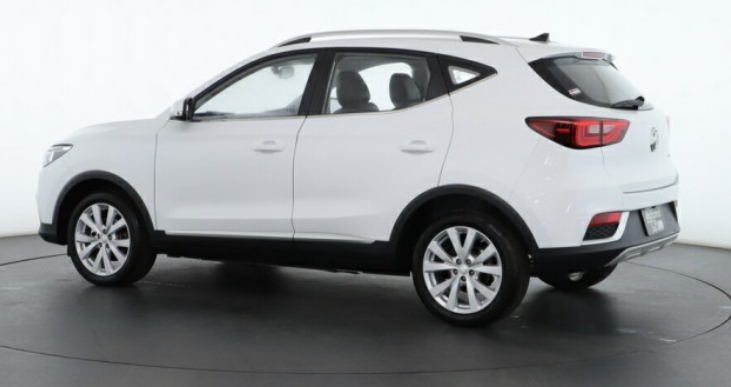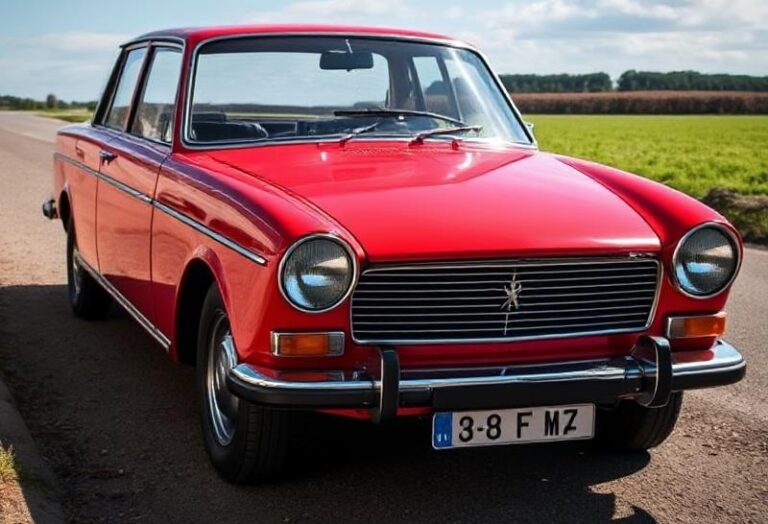The Unsung Innovator: A Complete History of the Nissan Liberty
In the fiercely competitive automotive landscape of 1990s Japan, the minivan, or Multi-Purpose Vehicle (MPV), reigned supreme. It was an era defined by practicality, innovation, and a domestic market that demanded maximum interior space from a minimal exterior footprint. While names like the Honda Odyssey and Toyota Estima often dominate historical discussions, Nissan carved out its own significant niche with a vehicle that was both a pioneer and a workhorse: the Nissan Liberty. Though it only existed as a distinct model for a single generation, its story is a fascinating snapshot of automotive evolution, technological advancement, and the unique demands of the Japanese Domestic Market (JDM).
To truly understand the Liberty, one must first look to its direct ancestor, the Nissan Prairie. The Prairie was a groundbreaking vehicle in its own right, often credited as one of the very first compact minivans. Its most defining feature, particularly in its second generation (M11, 1988-1998), was the absence of a B-pillar on the passenger side, allowing for a massive, unobstructed opening when both the front door and the rear sliding door were open. Towards the end of the M11’s production run, in 1995, Nissan introduced a seven-seater version and appended a new name to it: the Prairie Joy. The stage was set, and in November 1998, the “Prairie” name was retired, and its successor debuted as a standalone model: the Nissan Liberty (M12).
The First Generation: The M12 Nissan Liberty (1998 – 2001)
The Nissan Liberty M12 was launched as a complete redesign, moving away from the quirky, pillarless design of its predecessor towards a more conventional but vastly more refined and modern package. Marketed as a “compact tall wagon,” its design philosophy was clear: offer a spacious, flexible, and easy-to-drive vehicle for the modern Japanese family. It was built on Nissan’s MS platform, which it shared with other successful models like the Bluebird Sylphy and the Avenir, giving it a car-like ride and handling characteristics that were a significant improvement over the more utilitarian Prairie.
.

.
Key Innovations and Drivetrain
The M12 Liberty’s most significant technological feature was under the hood. It was one of the first minivans of its size to be equipped almost exclusively with a Continuously Variable Transmission (CVT). Nissan’s “Hyper CVT” system eliminated traditional gear shifts, providing exceptionally smooth acceleration and improved fuel efficiency. This was a bold move at a time when conventional 4-speed automatics were the industry standard.
The primary engine was Nissan’s venerable SR20DE, a 2.0-liter, DOHC inline-four engine producing a respectable 140 horsepower. This engine was known for its reliability and smooth power delivery, making it a perfect match for the CVT in front-wheel-drive (FWD) models.
For customers in snowy regions or those desiring extra traction, a four-wheel-drive (4WD) option was available. Interestingly, the 4WD models did not use the CVT. Instead, they were paired with a more traditional 4-speed automatic transmission and a slightly detuned version of the SR20DE engine.
A standout, and now highly sought-after, variant was the Liberty GT4 Highway Star. This performance-oriented model featured the legendary SR20DET engine – the turbocharged version of the 2.0-liter four-cylinder, famous for its use in the Silvia sports coupe. In the Liberty, it produced 230 horsepower, sending power to all four wheels through a 4-speed automatic transmission. A turbocharged, all-wheel-drive minivan, the GT4 was a true “sleeper” and a testament to the wild creativity of the JDM scene.
Initial Trim Levels (1998 – 2001)
The initial model lineup was straightforward, catering to different budgets and tastes:
- X: The entry-level model. It came with the essential features for family life, including power steering, air conditioning, and power windows. It typically featured steel wheels with hubcaps and a more basic cloth interior. It was available in both FWD (CVT) and 4WD (4-AT).
- G: The mid-range, volume-selling trim. The G model added more creature comforts, such as upgraded upholstery, automatic climate control, better sound insulation, and often included features like keyless entry and alloy wheels as either standard or optional.
- Highway Star: This was the premium, sporty trim level. The Highway Star distinguished itself with a full factory aero kit, including a more aggressive front bumper, side skirts, and a rear spoiler. It also featured larger alloy wheels, a sport-tuned suspension, and a darker, more premium interior with unique seat fabric. This trim gave the family-oriented minivan a dose of street style and was immensely popular.
- GT4 Highway Star: This was the pinnacle of the Liberty range. It combined the sporty aesthetics of the Highway Star trim with the powerful SR20DET engine and 4WD system, creating a unique performance MPV.
The interior was a masterclass in packaging. It featured a “walk-through” cabin, allowing movement between the first and second rows, and versatile seating for seven. The second-row seats could slide and recline, while the third row could be folded away to create a substantial cargo area. Nissan also offered its pioneering “Birdview” navigation system as an option, which used a 3D, top-down perspective that was revolutionary for the era.
The Mid-Life Refresh: The Facelifted M12 (2001 – 2004)
In May 2001, the Nissan Liberty received a significant mid-cycle refresh to keep it competitive against rivals like the Toyota Noah/Voxy and Honda Stepwgn. The changes were more than just cosmetic; they involved a major mechanical overhaul.
Mechanical and Technological Updates
The most crucial change was the replacement of the SR20DE engine with the all-new QR20DE. This new 2.0-liter engine was part of Nissan’s next generation of four-cylinders, designed for better emissions, improved fuel economy, and stronger low-to-mid-range torque. It produced 147 horsepower and offered a more refined driving experience.
Paired with this new engine in FWD models was an updated CVT, the Hyper CVT-M6. This advanced transmission now featured a six-speed “manual mode,” allowing the driver to select pre-set ratios using the gear lever for a more engaging drive, particularly on winding roads or during engine braking. The 4WD models continued with the 4-speed automatic transmission mated to the new QR20DE engine.
Cosmetic Changes and Revised Trim Levels
The facelift brought a new front fascia. The softer, rounded headlights of the original were replaced with sharper, more angular units. The grille was redesigned to be more prominent, bringing the Liberty’s look in line with Nissan’s corporate design language of the early 2000s. The rear taillights were also updated with new lens designs.
The trim level structure was revised and expanded to offer more choice:
- L-Selection: This became the new base model, offering essential features at an affordable price point.
- S-Package: A slightly sportier offering than the base model, often including features like a rear spoiler and alloy wheels without the full body kit of the Highway Star.
- G-Package: This remained the well-equipped, comfort-focused model, carrying over many of the features from the previous “G” trim.
- G NAVI Package: A variant of the G-Package that came standard with Nissan’s advanced navigation system, which was a significant selling point.
- Highway Star: The popular sporty trim continued with its signature aero kit, unique wheels, and premium interior, now powered by the QR20DE engine.
The Autech Touch: Rider and AXIS
During this latter half of its life, the Liberty also benefited from special editions crafted by Nissan’s renowned in-house tuning division, Autech. These were not performance monsters like the GT4, but rather highly stylized, premium versions.
- Liberty Rider: The Rider series, a name still used by Autech today, offered a much more dramatic and custom look. It featured a large, multi-slat chrome grille, a completely redesigned front bumper, unique polished alloy wheels, and often a lowered suspension. The interior received special two-tone leather or Alcantara seating. The Rider was for buyers who wanted their minivan to make a bold statement.
- Liberty AXIS: The AXIS was another Autech creation that focused on understated luxury. It featured a more subtle, elegant body kit, its own unique grille design, and premium interior appointments like wood-grain trim and high-quality leather seats. The AXIS presented a more mature and luxurious take on the Liberty.
End of an Era and Lasting Legacy
Production of the Nissan Liberty M12 ceased in November 2004. The market for compact minivans was evolving, with competitors offering even more interior space and features like power sliding doors. Nissan’s answer was an all-new vehicle, the Nissan Lafesta, which replaced both the Liberty and the Avenir wagon. The Lafesta continued the Liberty’s legacy of a car-like driving experience but with a more modern, lower-slung design and even more interior functionality.
Though its production run was relatively short (1998-2004), the Nissan Liberty stands as a significant model in Nissan’s history. It was a crucial bridge between the utilitarian Prairie and the more modern Lafesta. It was a champion of CVT technology in the family vehicle segment, proving that the smooth, efficient transmission could work effectively in a larger vehicle. Its thoughtful interior packaging, versatile seating, and user-friendly design made it a beloved choice for countless families in Japan.
Today, the Liberty is a reminder of the golden age of JDM minivans—a time when practicality bred innovation, and even a humble family hauler could be offered with the heart of a sports car. It remains an unsung hero, a vehicle that perfectly captured the spirit and needs of its time.







